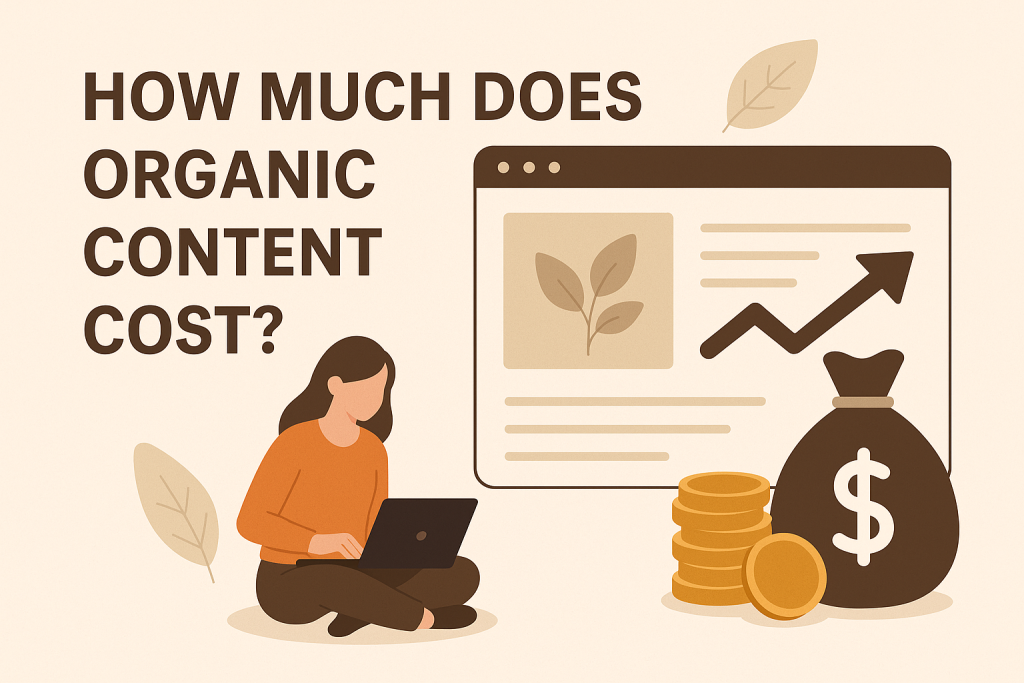Many businesses assume creating non-paid marketing assets requires minimal investment. This misconception often leads to unexpected expenses and missed opportunities. While there’s no direct ad spend, crafting valuable materials demands time, skill, and careful planning.
Recent studies reveal basic blog writing starts around $50 but climbs past $500 for specialized topics. Video projects show even wider ranges—simple clips at $200 and cinematic productions exceeding $2,000. Social media management adds another layer, with freelancers charging $500 monthly and agencies often doubling that.
Hidden factors like research hours, strategy sessions, and talent recruitment also impact budgets. A polished Instagram post might take 3-5 hours from concept to posting. Even “free” platforms require consistent effort to build meaningful engagement.
Smart budgeting means recognizing both visible and invisible costs. Whether working with solo creators or full-service teams, understanding these variables helps businesses allocate resources effectively. Let’s explore what drives pricing and how to maximize returns.
Key Takeaways
- Non-paid marketing materials involve hidden investments beyond direct fees
- Written articles range from $50 for basic drafts to $500+ for expert pieces
- Video production costs vary from $200 to over $2,000 depending on complexity
- Social media management averages $500-$5,000 monthly across service tiers
- Indirect expenses include strategy development and platform optimization time
- Proper budgeting requires accounting for both creation and maintenance phases
Understanding Organic Content and Its Value
Authenticity drives consumer decisions more than ever, making unpaid materials a critical business asset. Unlike temporary ads, resources found through search engines and social feeds build relationships that withstand market shifts.
Defining Organic Content
Organic content refers to any material audiences discover without paid promotion. This includes blog posts, videos, and social updates optimized for natural discovery. Its value lies in providing genuine solutions rather than direct sales pitches.
Successful examples rank well in search results and spark meaningful conversations. They follow SEO best practices while addressing specific audience needs. The goal? Earn attention through relevance rather than buy it through ads.
Key Benefits and Long-Term Impact
Three core advantages make this approach indispensable:
- Trust cultivation: 61% of consumers trust organic recommendations over paid ads
- Sustained visibility: Quality articles can drive traffic for years
- SEO synergy: Fresh content signals website relevance to search algorithms
| Aspect | Organic Content | Paid Content |
|---|---|---|
| Visibility Duration | Permanent traffic sources | Ends with budget |
| Cost Efficiency | No ongoing ad spend | Continuous investment |
| Trust Level | Builds brand authority | Viewed as promotional |
| SEO Impact | Improves search rankings | No direct benefit |
This strategic approach creates compounding returns. Companies using organic methods report 3x higher engagement rates than those relying solely on paid campaigns. Over time, these efforts establish brands as industry leaders while deepening customer connections.
Exploring the True Costs of Organic Content
Creating valuable marketing materials often surprises teams with its hidden demands. While no ad dollars change hands, building audience trust through unpaid channels requires careful resource allocation.
Time, Expertise, and Resource Investments
Producing standout materials demands more than quick drafts. Recent data shows a single blog post takes 4 hours to research, write, and optimize. Skilled creators juggle multiple roles:
- SEO specialists ensuring search visibility
- Designers crafting visual appeal
- Editors polishing messaging
Teams need professional tools like photo editors ($20-$50/month) and stock media subscriptions ($15-$200/month). Website hosting ($3-$300/month) and analytics platforms add ongoing operational costs.
Hidden Expenses Behind “Free” Content
Maintaining momentum creates recurring charges many overlook. Training programs ($500-$2,000/year) keep teams updated on algorithm changes. Content repurposing across platforms doubles production time.
Promotion often eats 30% of budgets. Sharing articles through social channels requires scheduling tools ($15-$100/month). Performance tracking needs specialized software ($50-$300/month) to measure true impact.
“Unpaid distribution channels still demand financial investment for maximum reach.”
Smart planners budget for both creation and maintenance phases. Balancing these elements ensures materials continue performing long after publication. To better understand how to align your digital strategy, explore the distinctions between content management and content marketing in this detailed guide.
Determining How Much Does Organic Content Cost
Pricing for original assets varies based on three key elements: complexity, creator expertise, and format requirements. A 500-word article demands different resources than an interactive infographic or cinematic product demo.
Factors That Influence Content Pricing
Production budgets shift dramatically across formats and quality tiers. This table shows typical price ranges for common marketing materials:
| Material Type | Basic Tier | Mid-Range | Premium |
|---|---|---|---|
| Written Articles | $50-150 | $150-500 | $500+ |
| Video Production | $200-500 | $500-2,000 | $2,000+ |
| Infographics | $100-300 | $300-1,000 | $1,000+ |
| Social Posts | $10-50/post | $300-600/month | $1,000+/month |
| E-books | $500-1,000 | $1,000-3,000 | $3,000+ |
Specialized formats like whitepapers require industry expertise and original research. A 20-page technical guide often costs 3x more than basic blog posts due to fact-checking and data visualization needs.
Video projects illustrate how duration affects budgets. Two-minute explainers cost 60% less than five-minute narratives needing scripts and professional editing. Platform requirements also matter – vertical clips for TikTok demand different framing than YouTube tutorials.
“Smart teams allocate 40% of their budget for revisions and platform optimization.”
Seasoned creators typically charge 25-50% more than newcomers but deliver better search performance. This premium ensures proper keyword integration and audience-focused messaging that drives results.
Organic Content vs. Paid Content: A Comparative Guide
Businesses often face tough choices when allocating marketing resources. Let’s break down how different strategies perform in real-world scenarios and where each shines brightest.
Cost-Effectiveness and ROI Analysis
Organic materials work like marathon runners – slow starters with lasting endurance. A well-crafted blog post can attract visitors for 24+ months. Paid campaigns act as sprinters, driving immediate clicks but needing constant cash injections.
Consider these key contrasts:
| Factor | Organic | Paid |
|---|---|---|
| Visibility Lifespan | 2+ years | 1-30 days |
| Monthly Costs | $0 after creation | $5,000+ |
| ROI Timeline | 6-12 months | Instant |
Paid ads excel during product launches, reaching 83% more eyeballs than unpaid methods. But they face challenges like ad blockers and audience burnout. One study found 47% of users ignore sponsored posts after seeing them repeatedly.
Three hybrid tactics deliver the best results:
- Boost top-performing articles with targeted ads
- Retarget visitors from paid campaigns with organic follow-ups
- Use paid traffic to build email lists for long-term nurturing
“Combining both approaches increases conversion rates by 38% compared to single-channel efforts.”
Smart marketers treat paid as a catalyst rather than a crutch. Allocate 70% of budgets to building evergreen assets, then use paid promotions to accelerate their impact.
Impact of Quality and Expertise on Content Costs
Superior content acts as a growth engine for businesses, but its creation demands more than basic writing skills. A HubSpot study reveals materials crafted by specialists generate 3x more leads than generic posts. This gap stems from strategic investments in expertise-driven creation that balances upfront costs with lasting returns.
Why Expertise Transforms Outcomes
Three pillars define premium content production:
- SEO mastery: Specialists use advanced keyword research to align with search algorithms
- Narrative precision: Professional writers structure information for maximum engagement
- Subject authority: Industry experts inject credibility that builds audience trust
Teams combining these skills create assets that rank higher in search engine results. The Content Marketing Institute found 53% of marketers saw improved visibility after prioritizing high-quality content. These pieces often outperform cheaper alternatives within six months.
“Investing in skilled creators isn’t an expense—it’s acquiring search engine real estate.”
Ongoing education maintains this edge. Annual certifications in search trends ($200-$1,500) and SEO tools ($50-$300/month) keep strategies effective. While basic posts might cost $100, expert-crafted alternatives averaging $400 deliver 5x more organic traffic over two years.
Smart budgeting matches expertise levels to goals. Startups might begin with mid-tier writers, while established brands benefit from specialists. Every dollar spent on quality compounds through sustained rankings and audience loyalty.
Strategies for Balancing Organic Content Costs
Smart teams optimize their content strategy by focusing on sustainable creation methods. Balancing quality with budget requires creative approaches that extend material lifespan while maintaining audience engagement.
Templates, Efficiency, and Repurposing Content
Standardized frameworks slash production time by 40% while ensuring brand consistency. Consider these template benefits:
- Style guides: Maintain visual and tonal uniformity
- Workflow charts: Streamline team collaboration
- SEO checklists: Embed search optimization from draft one
| Original Format | Repurposed Versions |
|---|---|
| Blog Post | Infographic, Podcast Episode, Social Carousel |
| Webinar | YouTube Tutorial, Blog Summary, Email Series |
| Case Study | Testimonial Video, LinkedIn Article, Press Release |
Repurposing top-performing assets triples reach while cutting creation costs. A single research report can fuel three months of social posts and email campaigns.
Leveraging User-Generated and Evergreen Content
Customer stories build trust 8x faster than branded messaging. Effective tactics include:
- Photo contests with branded hashtags
- Review-driven case studies
- Social media takeovers
“Our user-generated campaigns deliver 60% higher engagement than corporate content.”
Evergreen materials like tutorials and industry glossaries maintain relevance for 18-24 months. Focus on timeless topics that address fundamental customer needs rather than fleeting trends.
Integrating Organic Content into Your Marketing Strategy
Modern marketing thrives when strategies blend audience needs with platform strengths. The magic happens when materials feel native to each channel while supporting broader business goals.
Platform Selection Meets Audience Preferences
Choose social media platforms where your target audience naturally spends time. A B2B company might focus on LinkedIn discussions, while lifestyle brands connect through Instagram Stories. Analyze engagement patterns before committing resources.
Build content pillars around three audience interests:
- Educational posts explaining product benefits
- Behind-the-scenes glimpses humanizing your brand
- Interactive polls fostering two-way conversations
Collaborate with micro-influencers in niche communities. Their authentic voices amplify reach without large budgets. Join relevant groups to participate in existing discussions rather than starting from scratch.
Sync social media efforts with SEO practices. Repurpose high-performing blog sections into tweet threads using relevant keywords. Embed platform content on your website to boost dwell time – a key search engine ranking factor.
Track which posts drive website visits using UTM parameters. Double down on formats that convert casual scrollers into engaged visitors. This alignment turns casual followers into loyal advocates over time.
By weaving these elements together, businesses create marketing ecosystems where owned media supports paid efforts and vice versa. The result? Sustainable growth powered by genuine connections.







